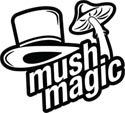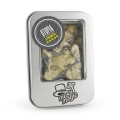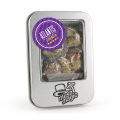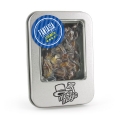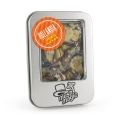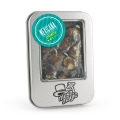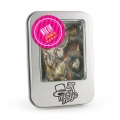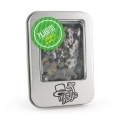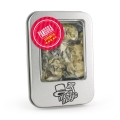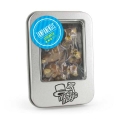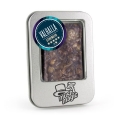What are Magic Truffles?
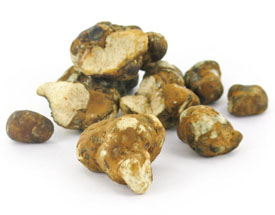 Magic Truffles are a 'by product' of the well known Magic Mushrooms and contain just like shrooms the psychoactive compounds psilocybin and psilocin. The official name for the Magic Truffle is "sclerotium"(plural: "sclerotia"). Magic Truffles are also known under the name "Philosopher's Stones".
Magic Truffles are a 'by product' of the well known Magic Mushrooms and contain just like shrooms the psychoactive compounds psilocybin and psilocin. The official name for the Magic Truffle is "sclerotium"(plural: "sclerotia"). Magic Truffles are also known under the name "Philosopher's Stones".
On the spot where mushrooms grow there is a whole network of mycelium. This mycelium is a mold with a white, stringy structure. Under the right conditions the mycelium will make the mushrooms grow. The mushrooms are actually the fruit of the mycelium. Some Magic Mushroom strains produce in this mycelium Magic Truffles. These Magic Truffles are a compact mass of hardened mycelium where the food and water gets stored and can be used when growing conditions are not optimal.
On our earth there are about 200 different kind of mushrooms that have been identified to contain psilocybin and psilocin. Only a handful of these shrooms are able to produce the Magic Truffles. The most well-known are: Psilocybe tampanensis, Psilocybe mexicana and Psilocybe Atlantis.
After harvesting, Magic Truffles contain about 50%-70% water. After drying the Magic Truffles you will only have about 30% to 50% of the original weight. This differs per strain and how the truffles are bred ( in comparisons: freshly picked mushrooms exists out of 90% water).
Magic Truffles look a bit like the "normal" truffle that is well known in the culinary world. The taste of Magic Truffles is often described as a Walnut flavor.
The effects of Magic Truffle are the same as Shrooms. There are not many people who know of the existence of Magic Truffles. When the Shrooms were banned in 2008 in Holland, the law was adjusted so that ( luckily ) the Magic Truffles did not fall under this new law. Because of the ban on Shrooms, the smartshops in Holland zeroed in on the sales of Magic Truffles. Because of this, the Magic Truffles have seen a rise in sales and are more popular than ever.
